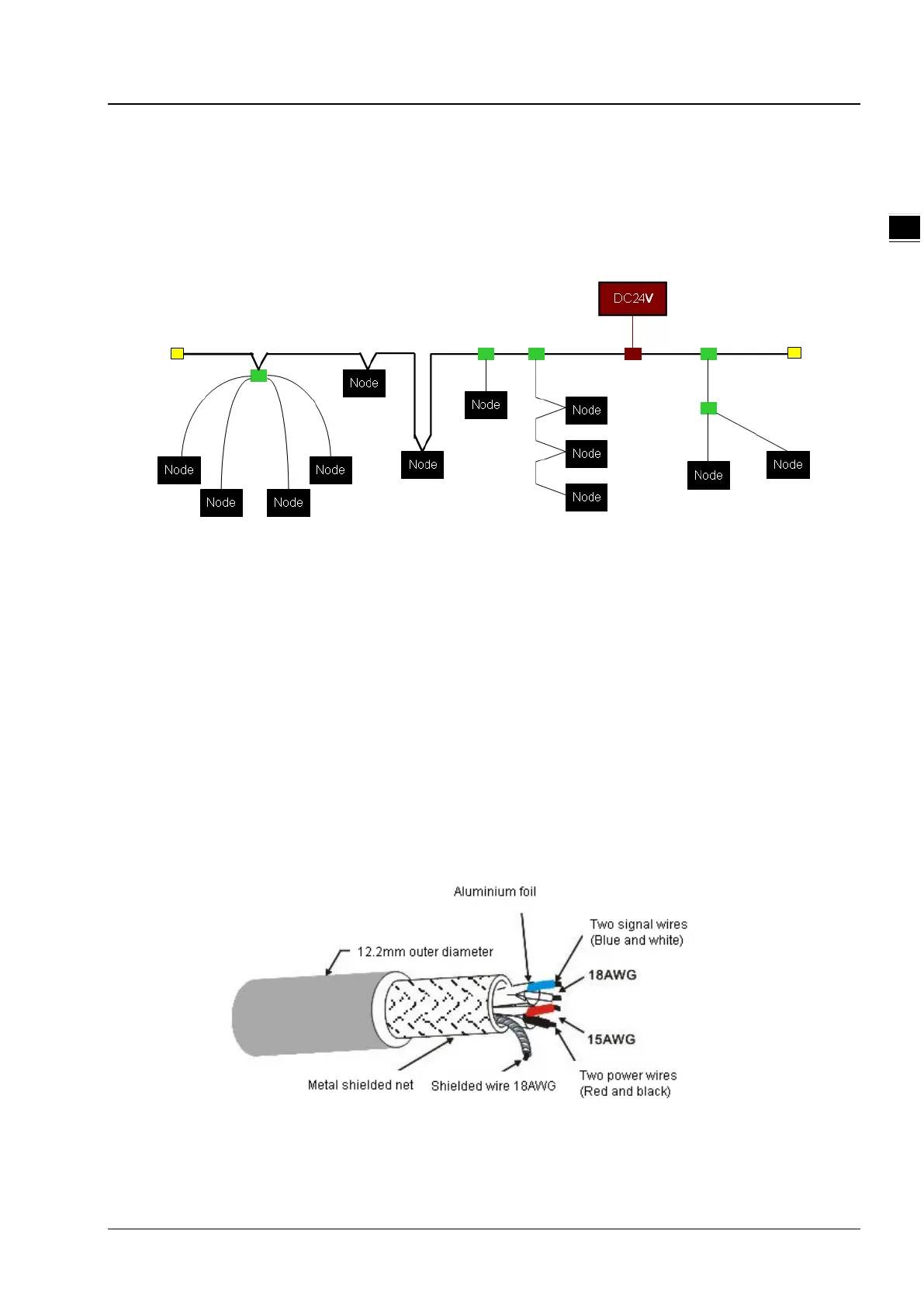Chapter 11 DeviceNet Master Scanner Module AS01DNET-A
11-11
1
11.3.3 Choice and Purpose of a DeviceNet Terminal Resistor
Choice of a DeviceNet Terminal Resistor
A DeviceNet network requires two terminal resistors of 121 Ω connected at both ends of the trunk cable respectively.
The thick cable represents the trunk cable, the thin cable represents the branch cable and the yellow boxes at the two
ends are terminal resistors in the following figure.
Purpose of a DeviceNet Terminal Resistor
The terminal resistor is used for eliminating the signal reflection in the communication cable.
All signal transmission cables have the characteristic impedance. The characteristic impedance of Delta DeviceNet
communication cable is about 121 Ω.
When being transmitted to the end of the communication cable, because the impedance of the end is different from the
characteristic impedance, the signal will be reflected, which will interfere with the new signal and the signal wave form
distortion will happen.
The phenomenon of the signal wave form distortion is not obvious in the short-distance transmission. But the wave form
distortion will become severer in the increasingly long communication cable. Therefore, the two ends of the trunk cable
must be installed with the terminal resistors respectively.
Installation Position of Terminal Resistors
The DeviceNet communication cable consists of five wires such as red wire, blue wire, white wire, black wire and shielded
wire as below.
The terminal resistors must be installed to the two ends of the trunk cable only. Since the blue wire and white wire are
for signal transmission, both of the terminal resistors must be installed between blue wire and white wire at the two ends
of the main cable.

